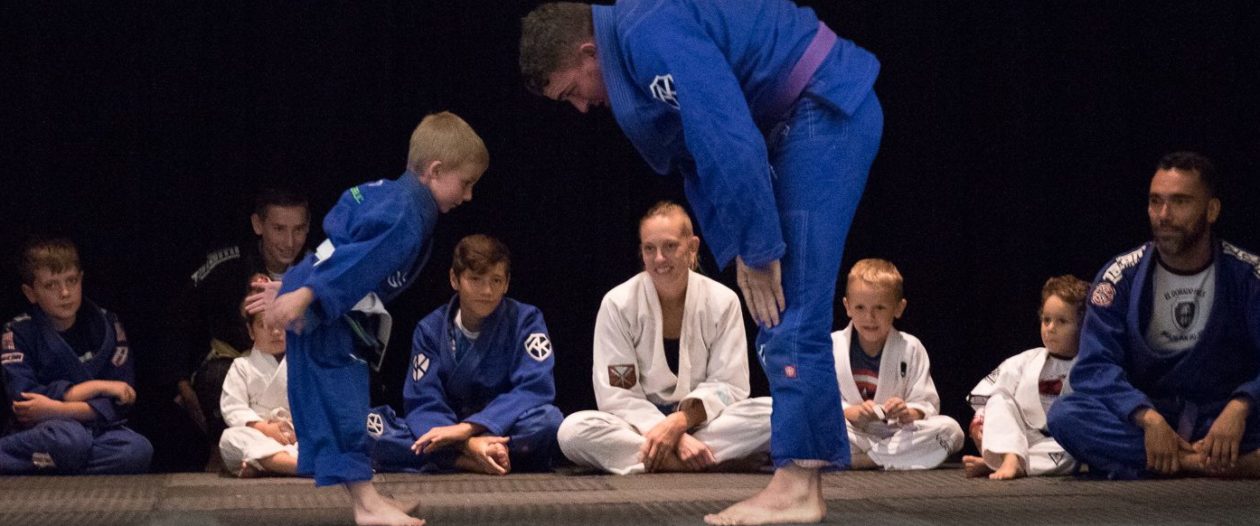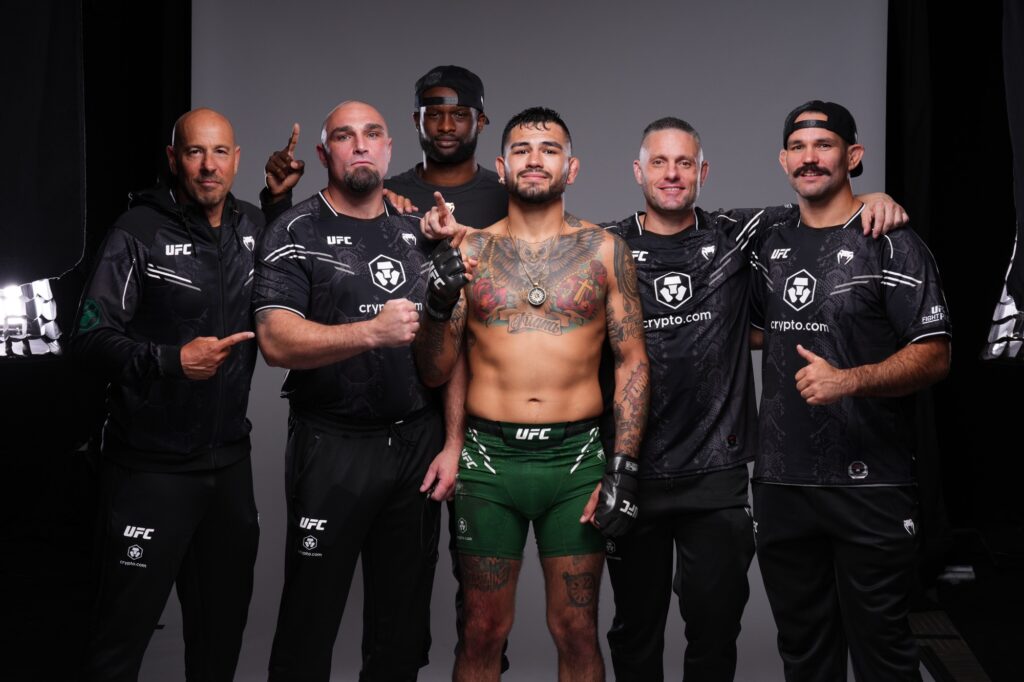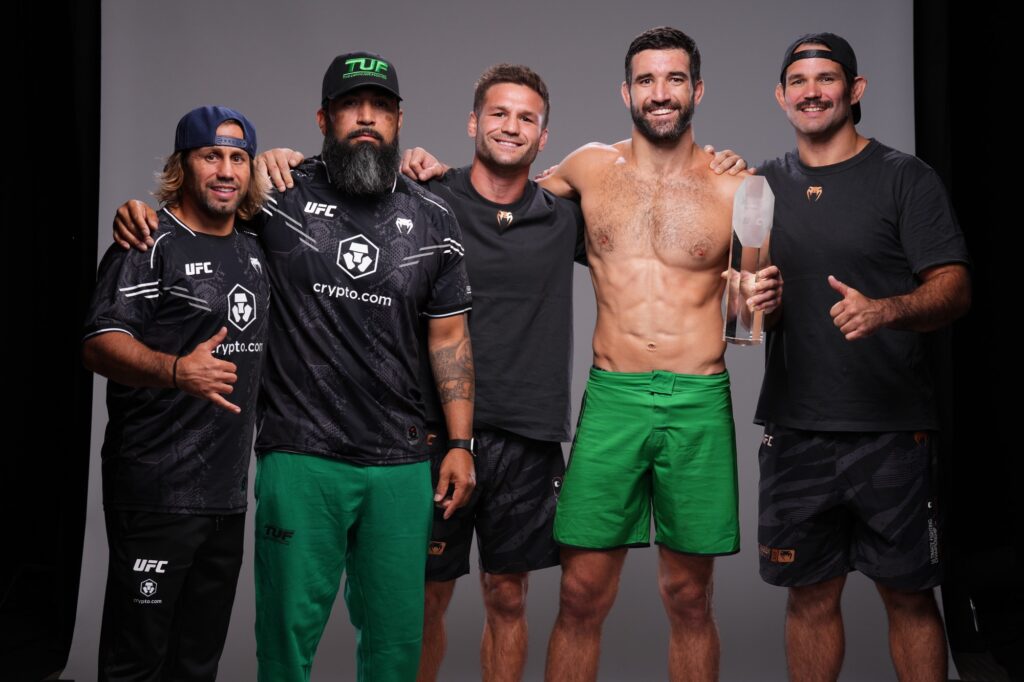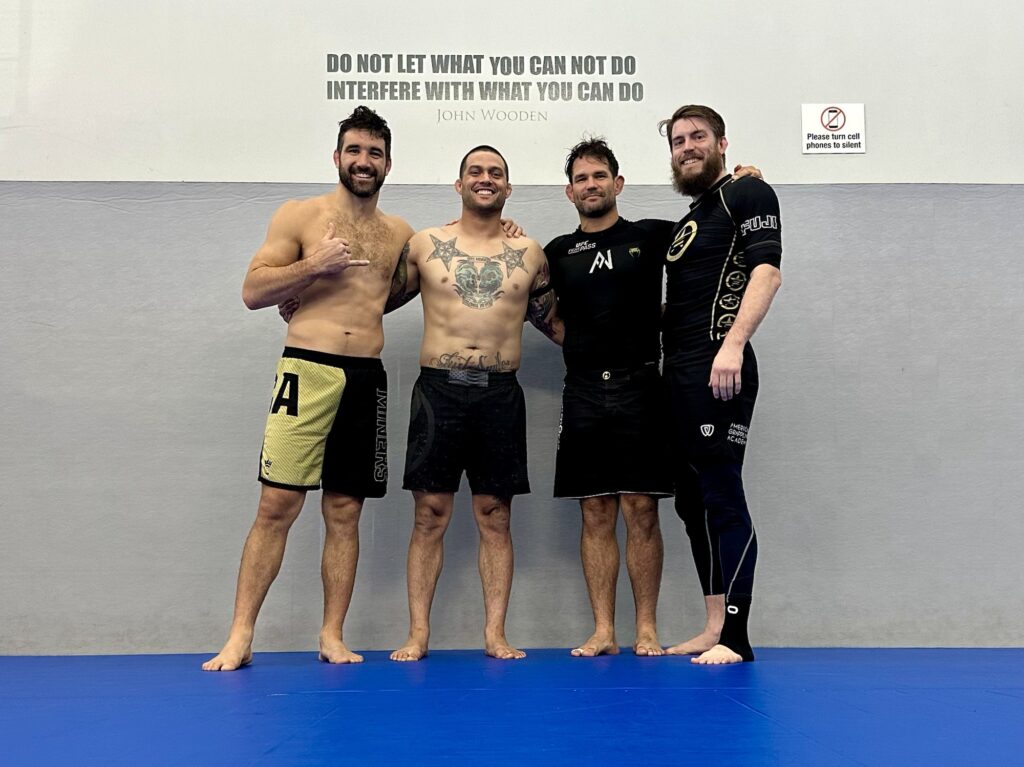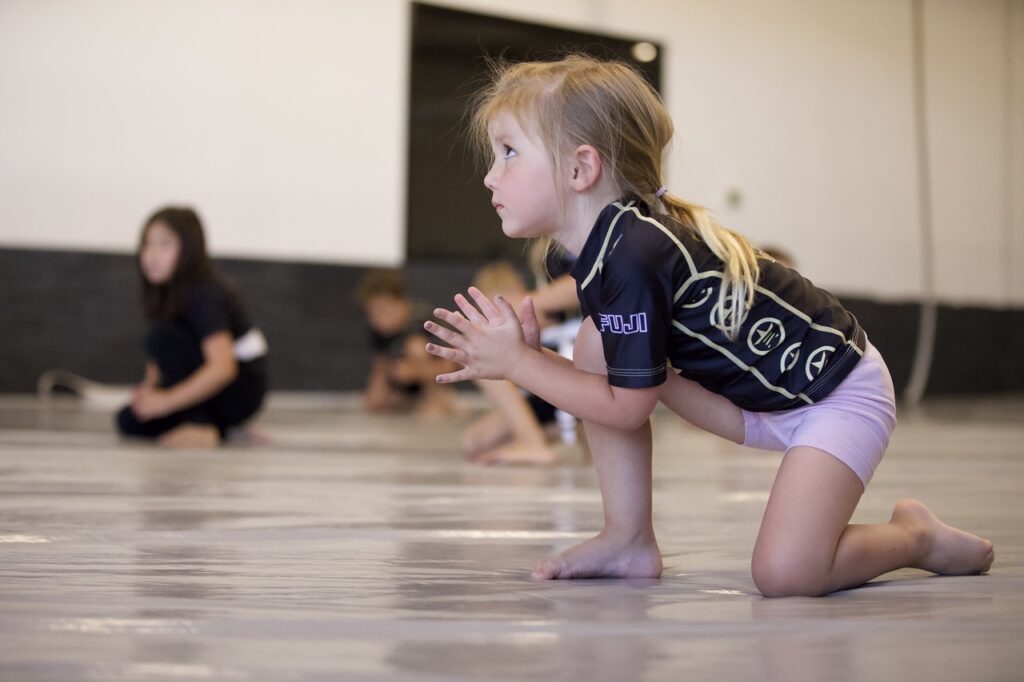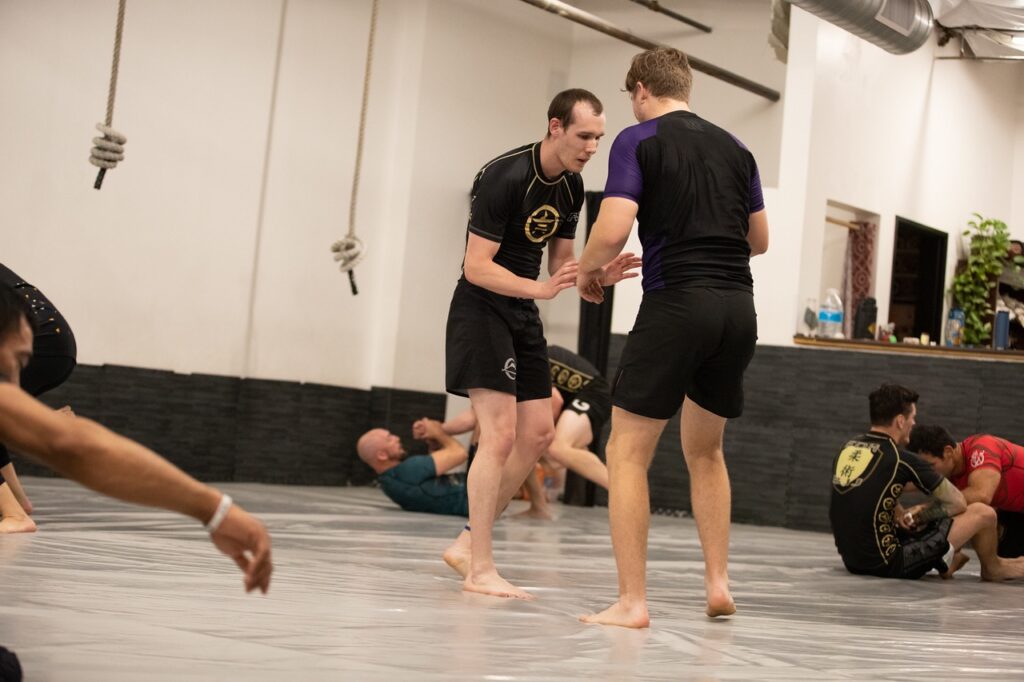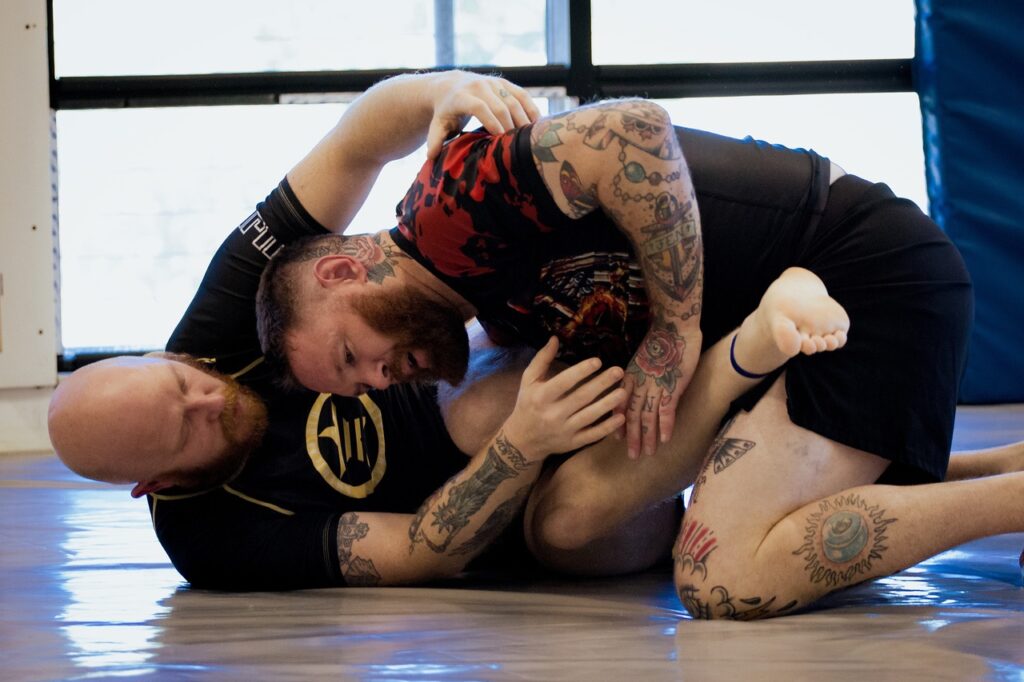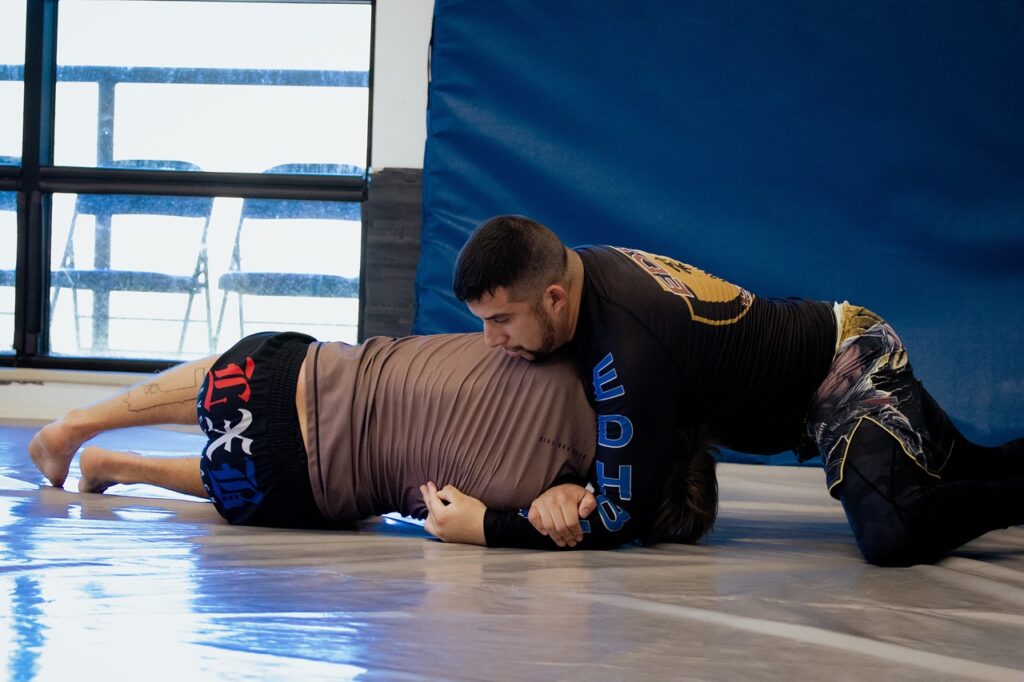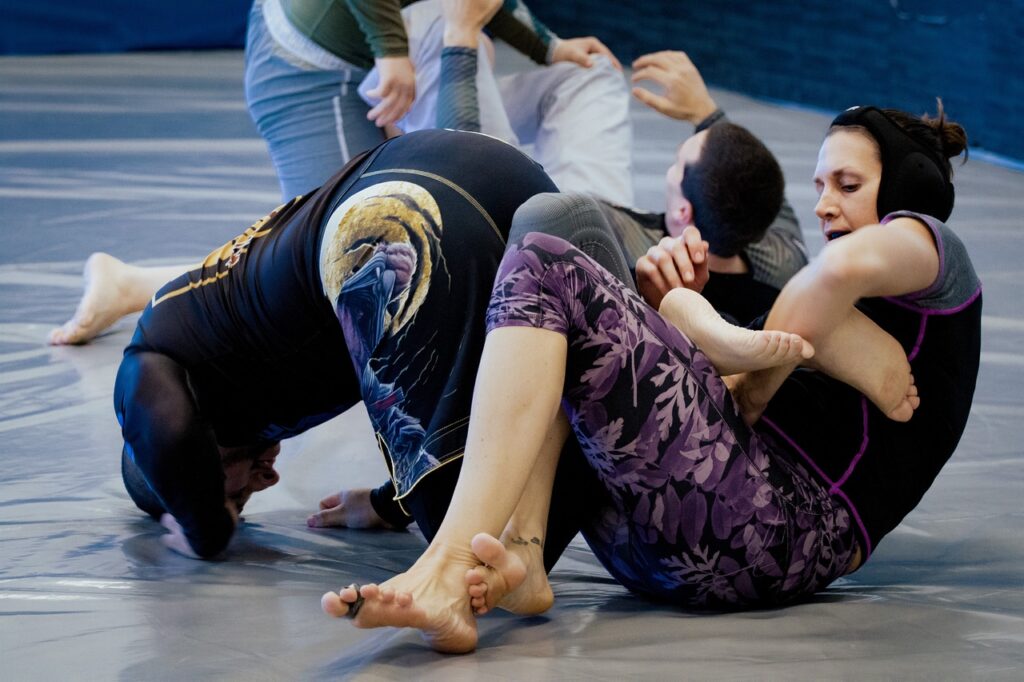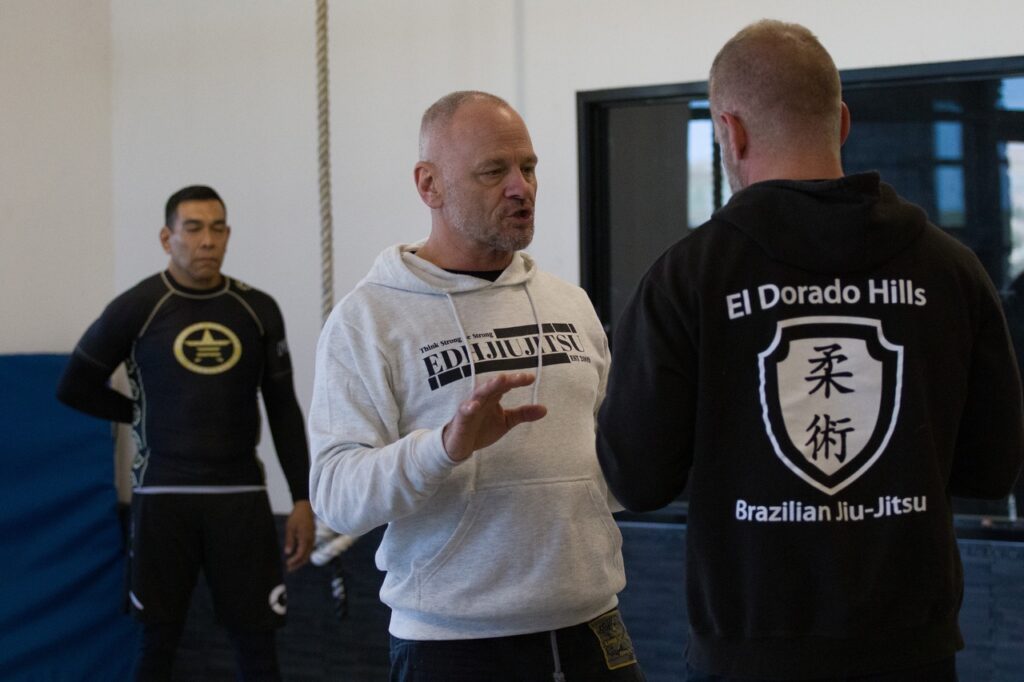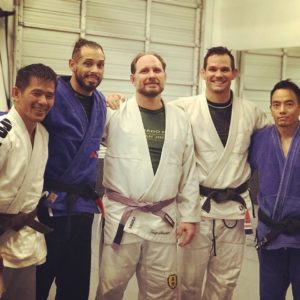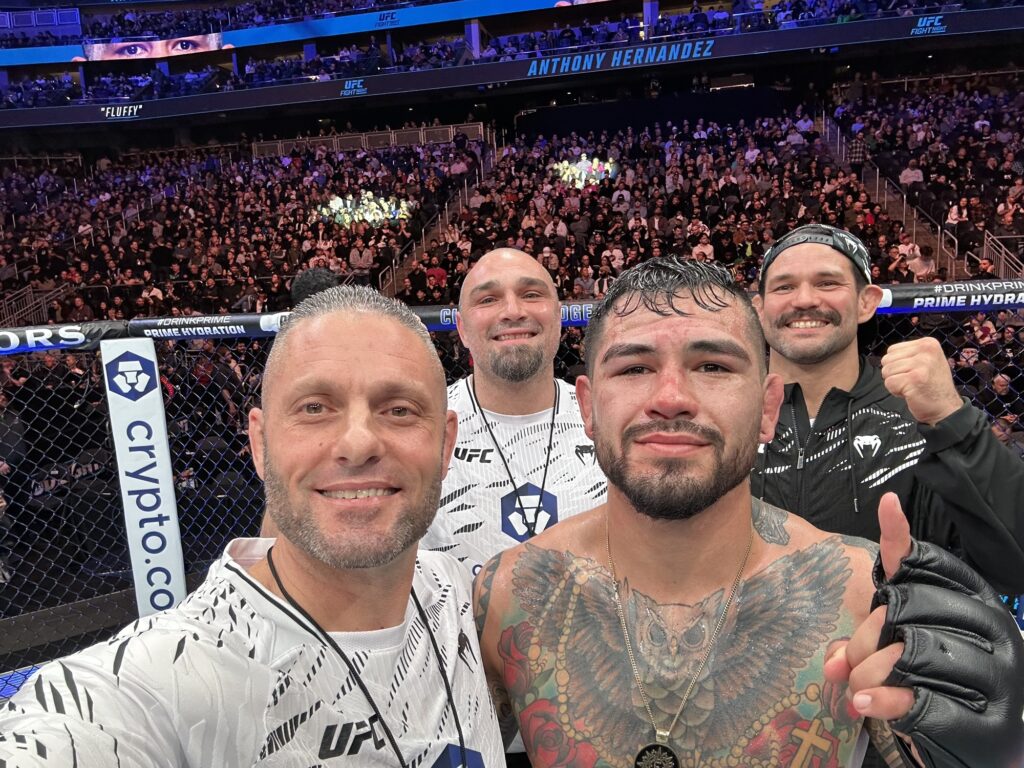
This past weekend at UFC Seattle, Anthony “Fluffy” Hernandez once again proved why he’s a force in the middleweight division, securing a decisive win over Brendan Allen. It was a high-paced, technical battle, and Hernandez’s relentless pressure and grappling control made the difference. With this victory, he extends his winning streak and solidifies himself as a top contender in the division.
A Rivalry Rekindled
The history between Hernandez and Allen goes back to 2018, when they first faced off for the LFA Middleweight Championship. Hernandez won that fight by unanimous decision, setting the stage for a long-standing rivalry. Over the years, both fighters have evolved, and their rematch at UFC Seattle was a true test of how far they’ve come. Once again, Hernandez walked away with the win, proving that his skill set and determination remain a step ahead.
Coach Eliot Kelly in his Corner
At El Dorado Hills Jiu Jitsu, we’ve had the privilege of watching Anthony develop over the years. Coach Eliot Kelly has worked with him since 2020, helping make contributions to his grappling skills and fight preparation. If you’ve ever trained with Eliot, you know the emphasis he places on positional control, positional escapes, and staying composed under pressure—all of which were on full display in Anthony’s performance.
Watching Anthony apply these skills at the highest level is inspiring. His ability to shut down Allen’s submission attempts, stay dominant in the grappling exchanges, and push the pace for three rounds speaks to his dedication and work ethic.
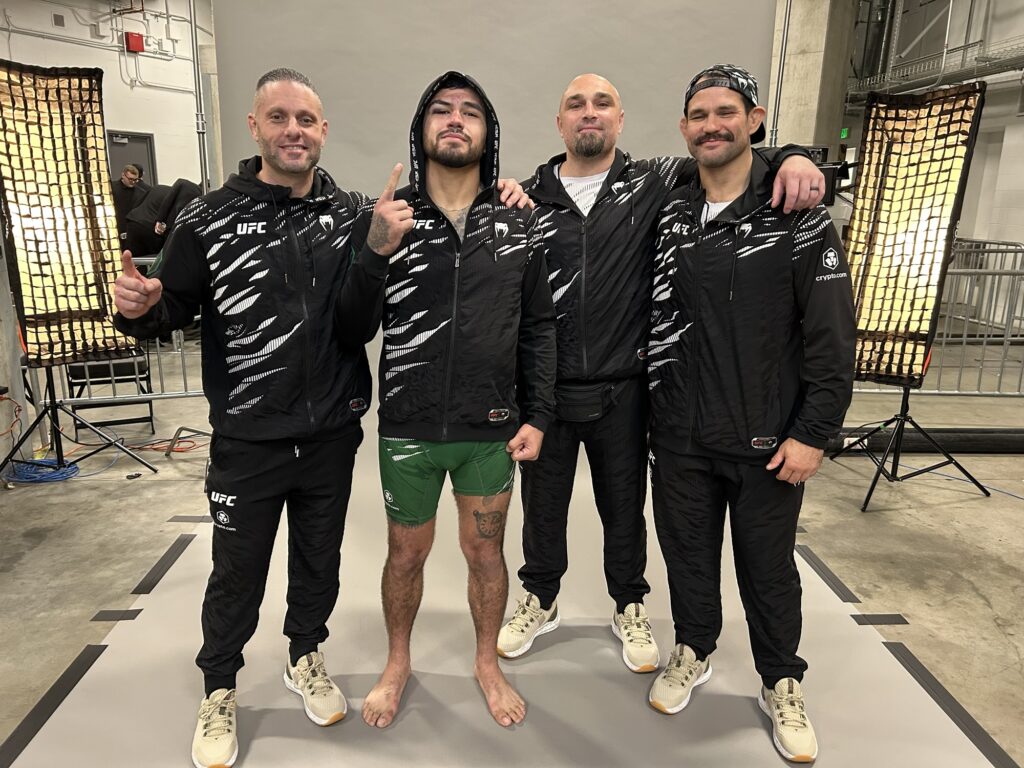
Implications for Jiu Jitsu Practitioners
Hernandez’s performance offers valuable lessons for those training in jiu jitsu:
• Positional Dominance: His ability to maintain top control and transition between positions underscores the importance of positional awareness in jiu jitsu. Controlling an opponent limits their offense and opens up opportunities for submissions or ground-and-pound.
• Submission Defense and Escapes: Allen is a dangerous grappler, but Hernandez’s defense and ability to escape tough positions were key to his victory. Being able to neutralize submission threats is essential in both sport jiu jitsu and MMA.
• Conditioning and Pace: The high pace maintained throughout the fight shows the importance of cardiovascular conditioning. Sustaining pressure and executing techniques under fatigue is what separates good practitioners from great ones.
The Road Ahead
As Anthony continues his climb up the middleweight ranks, we’ll be cheering him on. His success is a testament to the power of hard work, dedication always improve, and a grounded family and friends who support him. Congratulations, Anthony—your EDH Jiu Jitsu family is proud of you!
